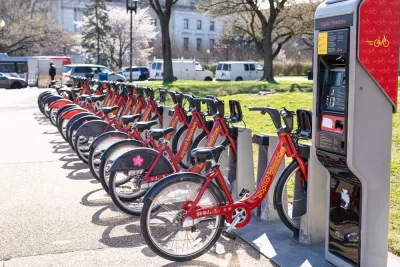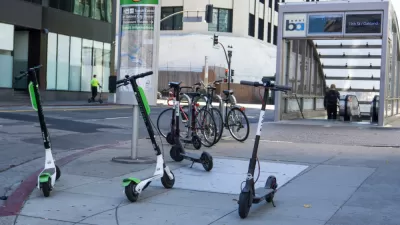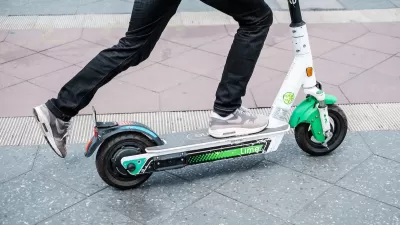Shared micromobility, particularly docked bikeshare systems, are seeing record growth, but ‘scooter inflation’ may cool riders’ enthusiasm.

U.S. bikeshare systems are bouncing back with a vengeance after the pandemic, reports Sarah Holder for Bloomberg CityLab, with systems around the country seeing ridership growth of 18 percent over 2019. “Of all the modes, docked bikeshare was most resilient, declining only 24% between 2019 and 2020 even as transit ridership plunged by 81% and car travel by 40%.” Numbers were more mixed for e-scooters, which some operators pulled from cities as ridership dropped. “Ridership nearly doubled between 2020 and 2021 to 62.5 million, making up more than half of the year’s overall micromobility users, but the number of trips was still 27% lower than in 2019.”
Even with pandemic setbacks, shared micromobility’s popularity has grown steadily. “Since the dawn of the tiny vehicle revolution in 2010, US ridership has reached half a billion total rides.”
Holder warns that despite this growth, rising prices could drive away riders. “To remain a viable transportation option for residents, however, the industry will need to get a handle on scooter inflation. No longer subsidized by a glut of investor capital, the average dockless e-scooter or e-bike ride cost $7 in 2021 — double or more than 2018 rates, making it pricier than the typical transit trip and more comparable with sharing an Uber or Lyft.”
Alex Engel, NACTO’s senior communications manager, also points to the need for safer infrastructure for bikes and scooters in many cities. “Beyond environmental or economic forces, the future popularity of micromobility will have a lot to do with how streets are designed and how systems reach riders.”
FULL STORY: Bikeshare Roars Back From the Pandemic

Alabama: Trump Terminates Settlements for Black Communities Harmed By Raw Sewage
Trump deemed the landmark civil rights agreement “illegal DEI and environmental justice policy.”

Planetizen Federal Action Tracker
A weekly monitor of how Trump’s orders and actions are impacting planners and planning in America.

Why Should We Subsidize Public Transportation?
Many public transit agencies face financial stress due to rising costs, declining fare revenue, and declining subsidies. Transit advocates must provide a strong business case for increasing public transit funding.

Understanding Road Diets
An explainer from Momentum highlights the advantages of reducing vehicle lanes in favor of more bike, transit, and pedestrian infrastructure.

New California Law Regulates Warehouse Pollution
A new law tightens building and emissions regulations for large distribution warehouses to mitigate air pollution and traffic in surrounding communities.

Phoenix Announces Opening Date for Light Rail Extension
The South Central extension will connect South Phoenix to downtown and other major hubs starting on June 7.
Urban Design for Planners 1: Software Tools
This six-course series explores essential urban design concepts using open source software and equips planners with the tools they need to participate fully in the urban design process.
Planning for Universal Design
Learn the tools for implementing Universal Design in planning regulations.
Caltrans
Smith Gee Studio
Institute for Housing and Urban Development Studies (IHS)
City of Grandview
Harvard GSD Executive Education
Toledo-Lucas County Plan Commissions
Salt Lake City
NYU Wagner Graduate School of Public Service





























